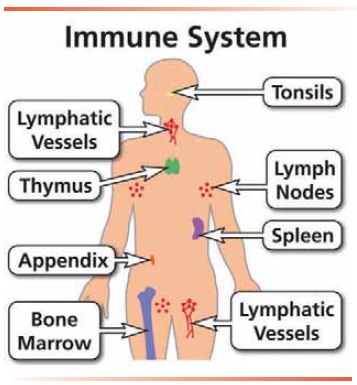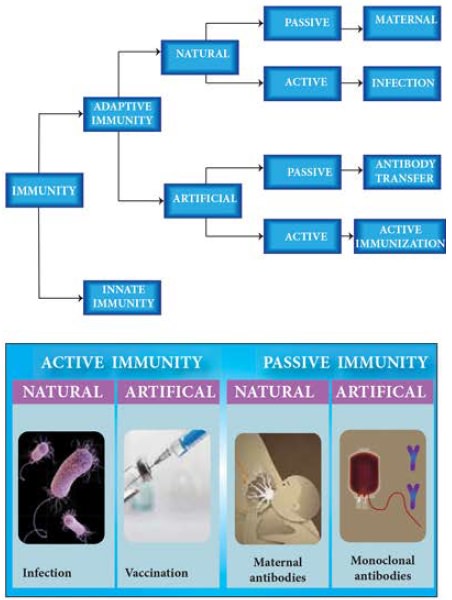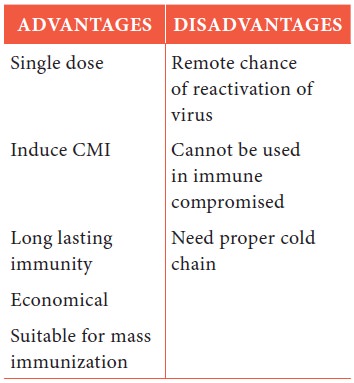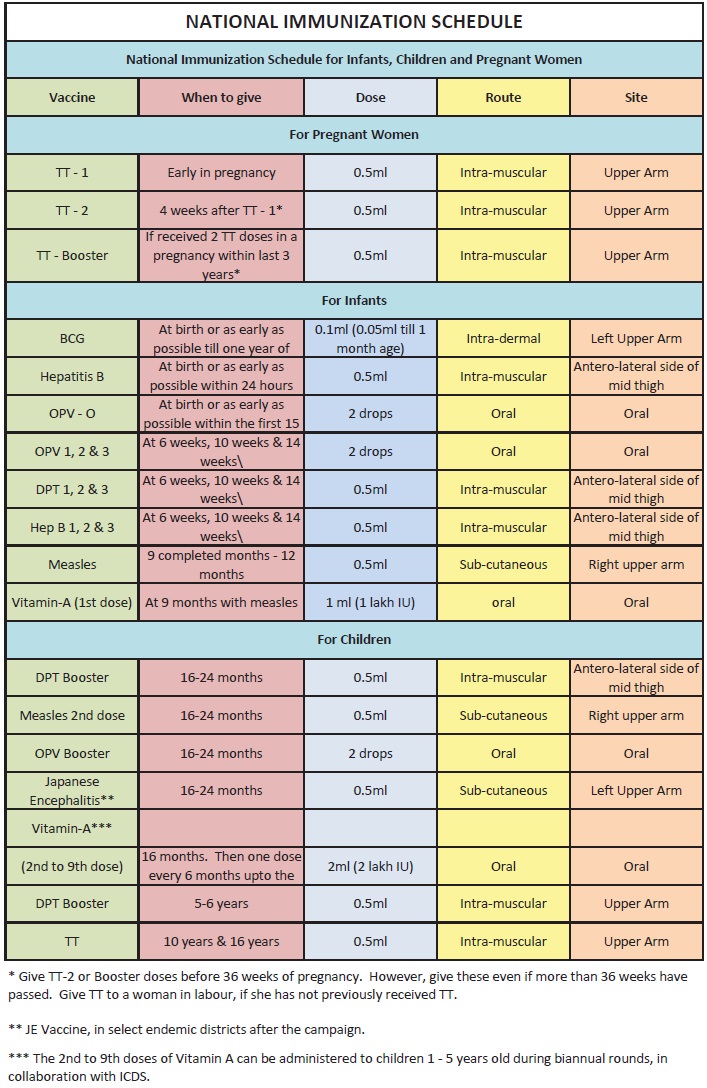Chapter: 11th Nursing : Chapter 6 : Nursing - Infection Control
Immunity and Immune System
Immunity
The ability of a host to resist a
particular infection or toxins by the action of specific antibodies or
sensitized white blood cells produced by them in response to natural exposure
of the organism is called as immunity.
Immune System
A complex network of specialized
cells, tissues, and organs that recognize and defend body from foreign
substances. Primarily disease causing microorganism such as bacteria viruses,
parasites and fungi.
Lymphoid Organs:
·
PRIMARY
LYMPHOID ORGANS – Thymus, Bone Marrow
·
SECONDARY
LYMPHOID ORGANS – Lymph Node, Spleen
These organs produce immune cells
or T-cells, B-cells, NK cells, macrophages, leukocytes that help to fight
against pathogens

Factors Influencing the Immune Status of Individual Inherent
Species immunity
Species immunity is that in which
a disease affecting one species does not affect the other species (Ex) Human do
not contract cattle plague, chicken cholera, while animals are not affected by
enteric fever.
Racial immunity:- is that in which various
races show marked differences, in their resistance to certain infectious
disease.
(Ex) Black Africans affected by a
sickle cell anemia (a genetic disease) are resistant to Malaria while Malaria
affects other human races.
Individual immunity:-The same racial
background and opportunity for exposure some individual of the race experience
severe infection. (Ex) Children are more susceptible to disease such as
measles, chicken pox while aged individuals are susceptible to pneumonia.
Specific antibodies or sensitized
white blood cells produced by them in response to natural exposure of the
organism is called as immunity.
Types of immunity:- 3 types of immunity is in human.
1.
Innate immunity (natural or non specific)
2.
Acquired (specific or adaptive) immunity
3.
Active
and passive immunity.

Innate (natural or Non-specific immunity:-
It refers to the inborn ability of
the body to resist and is genetically transmitted from one generation to the
next. The immunity offers resistance to any microorganism or foreign material
encountered by the host.
Natural immunity results after
acquiring certain disease Ex. Measles. This immunity lasts a life time.
Innate immunity can be divided in
to species, racial, individual immunity
Acquired immunity (Specific or Adaptive):
Acquired immunity refers to an
immunity that is developed by the host in its body after exposure to a suitable
antigen or after transfer of antibodies.
Immunity can be described as
either active or passive, depending on how it is acquired.
Active immunity: - Active immunity involves
the production of antibodies by the body itself and the subsequent development
of memory cells.
Passive immunity: - Results from the acquisition
of antibodies from another source and hence memory cells are not developed.
Active immunity will result in
long-term immunity but passive immunity will not due to the presence or absence
of memory cells.
Both active and passive immunity
can be induced by either natural or artificial mechanism.
Examples of active immunity: -
Natural – Producing antibodies in response
to exposure to a pathogen if infection acquires. (e.g. Chicken Pox, Measles).
Artificial – Producing antibodies in response to the controlled exposure to an attenuated pathogen
(e.g. vaccination)
Examples of passive immunity: -
Natural: Receiving antibodies from
another host. (e.g. IgG - mother to feters via the placenta; IgA - From
mother to new born via breast milk (colostrum)).
Artificial: - Receiving manufactured
antibodies via external delivery (Blood transfusion of monoclonal
antibodies).
Types of Immunity:-
Example

Types of immunization:-
Active immunization: is the induction of immunity after exposure of
an antigen. Antibodies are created by the recipient and may be stored
permanently. Artificial active immunization is where the microbe is injected
into the person before they are able to take it in naturally.
Passive immunization: - It can be provided when people cannot
synthesize antibodies, and when they have been exposed to a particular organ
that they do not develop immunity.
Vaccine:-
Definition:
A vaccine is a biological
preparation that provides active acquired immunity to a particular disease. A
vaccine typically contains an agent that resembles a disease causing
microorganism and is often made from weakened or killed forms of the microbe,
its toxin or one of its surface protein.
The agent stimulates the body’s
immune and that it may encounter in the future.
The term vaccine and vaccination
were derived from variola vaccine (smallpox of the cow) This term was first
discovered by Edward Jenner in 1796.
Types of vaccines:
·
Live
Attenuated Vaccine
·
Inactivated
Vaccine
·
Subunit
Vaccine
·
Toxoid
Vaccine
·
Conjugate
Vaccine
·
DNA
Vaccine
·
Recombinant
Vector Vaccine
Live attenuated vaccine:
Live microorganism modified to be
less deadly or closely related microorganism that induce immune response. The
organism can be attenuated by growing it in prolonged culture. Attenuation
means the loss of virulence of the pathogen.
e.g. OPV, MMR (mumps, measles,
Rubella) BCG, varicella vaccine, yellow fever.
Inactivated vaccine or killed vaccine:
Whole microorganism destroyed by
heat, chemicals, radiation, antibiotics.
e.g. Hepatitis A vaccine, Hepatitis B, Pneumococcal
polysaccharide, IPV, influenza, Hib, Typhoid.
Toxoid vaccine:
Inactivated toxic compounds is
toxoid. [toxins can be inactivated by using formalin]
Toxin +formalin ____________
toxoid
e.g. DPT, Antivenom, TT (tetanus
toxoid)
Subunit vaccine:
A Protein component of the
microorganism.
e.g. Surface Protein or Synthetic
virus like particles lacking viral genetic material [unable to replicate] e.g.
Hepatitis –B
Monovalent Vaccine:
Immunize against single strain of
microorganism.
Multivalent Vaccine:
Immunize against multiple antigens
strains or micro organism
The children with malnutrition
have low resistance to fight against infection. Therefore children need timely
immunization. All children have a rights to get vaccines, protection against
preventable disease. Extremely malnourished children may show severe reaction
to certain vaccines because they have low antibodies. e.g. Measles Vaccine.
Advantages of live/killed Vaccine:
Live Vaccine:

Killed Vaccine:

Maintaining a cold chain:
It is essential to maintain the
favorable temperature with cold storage, to maintain the potency of vaccines.
The temperature should be around 2°C to 8°C. The vaccine should be kept under
freezing compartment. The thermometer should be placed in cold place to confirm
the validity.
During transportation, the
vaccines should be placed in a container maintaining the cited temperature or
in a plastic bag in the ice box.
The Vaccines should be arranged
according to their expiry dates for the better use.
Contraindications for the immunization:
An acute illness with fever.
When the child is on immune
suppressive drug or on radiation.
A child suffering from leukemia,
lymphoma, malignancy.

Infection & Its transmission:
1. Entry of infection into human body:
·
Microorganism
may enter the body in
·
one
of the below three ways.
·
Digestive
tract – Swallowed in contaminated food or water.
·
Respiratory
tract – air contain pathogens
·
Skin
and mucous membrane – through a wound, weekend surface or injections
2. Organism leave the body of an infected person:
·
Excreta
– Feces and urine.
·
Coughing
and sneezing and sputum Pus and wound discharges
·
Blood
(Mosquito bite and injection needles)
3. Routes of transmission:
·
Fecal
to oral route. Feces to Skin.
·
Droplet
infection
4. Prevention of infection:
·
Hand
washing before preparing or eating food.
·
Eating
only clean food, kept free from flies.
·
Handwashing
after defecation.
·
Drinking
boiled water. Avoid crowded places.
·
Immunization
specially to protect children.
·
Cover
the mouth and nose when coughing.

Related Topics